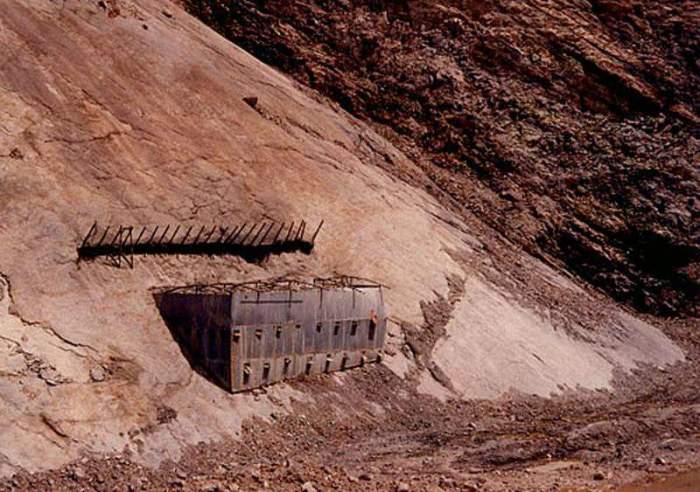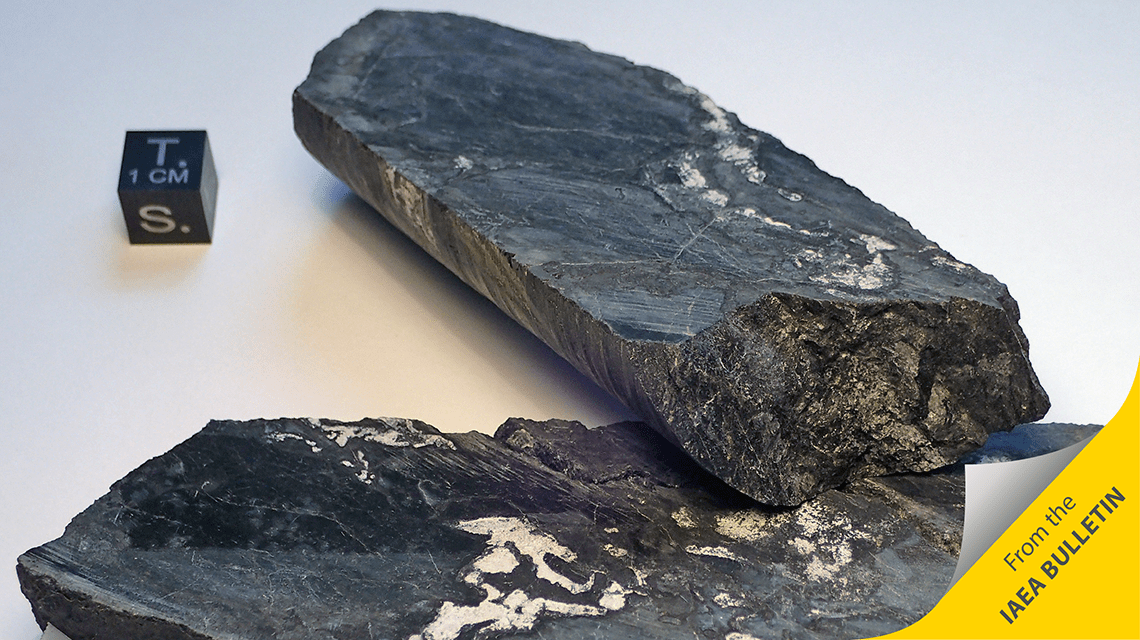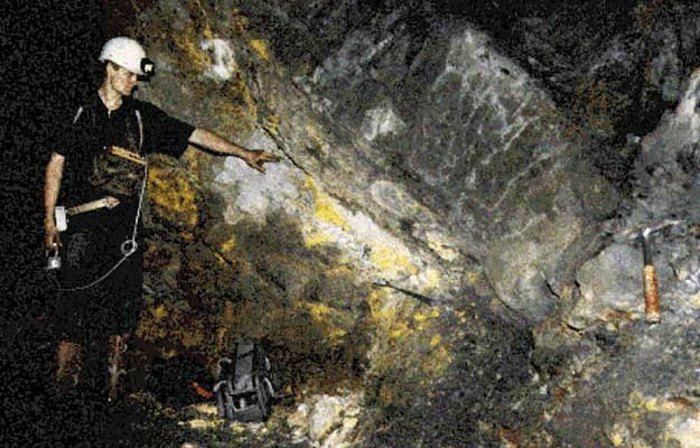The Oklo Gabon nuclear reactor, a natural phenomenon that occurred billions of years ago, stands as a testament to the remarkable power and complexity of nature’s processes. This ancient reactor, discovered in the heart of Africa, has provided invaluable insights into the potential and challenges of nuclear energy, shaping our understanding of the field.
Nestled within the Franceville Basin of Gabon, the Oklo reactor operated for hundreds of thousands of years, producing energy through nuclear fission. Its discovery in 1972 sparked a surge of scientific inquiry, leading to a wealth of knowledge about the behavior of nuclear reactions and the long-term effects of radioactive materials in the environment.
Oklo Gabon Nuclear Reactor
The Oklo Gabon nuclear reactor is a natural nuclear reactor that operated in what is now Gabon, Africa, approximately 2 billion years ago. It is the only known natural nuclear reactor on Earth and is significant because it provides evidence of natural nuclear fission occurring without human intervention.
The Oklo reactor was discovered in 1972 by French physicist Francis Perrin. Research on the reactor has revealed that it operated for several hundred thousand years and produced significant amounts of energy. The reactor’s operation was sustained by the presence of uranium-235, a fissile isotope of uranium, in the surrounding rock.
Research on the Oklo Reactor
Research on the Oklo reactor has provided valuable insights into the behavior of nuclear reactors and the potential for natural nuclear fission. Scientists have studied the reactor’s geology, chemistry, and physics to understand how it operated and how it affected the surrounding environment.
The research has shown that the Oklo reactor operated in a stable and controlled manner. The reactor’s power output was regulated by the presence of neutron-absorbing elements in the surrounding rock, which prevented the reactor from becoming too powerful.
The research on the Oklo reactor has also provided evidence for the long-term stability of nuclear waste. The reactor’s waste products have been contained within the surrounding rock for billions of years, demonstrating that nuclear waste can be safely stored for extended periods.
Geological and Physical Characteristics: Oklo Gabon Nuclear Reactor

The Oklo reactor site is located in the Franceville Basin of Gabon, Central Africa. The basin is filled with sedimentary rocks that were deposited during the Proterozoic Era, between 2.5 and 0.5 billion years ago. The Oklo reactor is located in a layer of sandstone that is about 1.7 billion years old.
The geological processes that led to the formation of the Oklo reactor are not fully understood. However, it is believed that the reactor was formed when a uranium-rich groundwater seeped into a fracture in the sandstone. The uranium in the groundwater reacted with the oxygen in the air to form uranium oxide, which is a radioactive material.
The heat from the radioactive decay of the uranium oxide caused the surrounding sandstone to melt, forming a molten pool. The molten pool eventually cooled and solidified, forming the reactor core.
Physical Characteristics
The Oklo reactor is about 10 meters wide and 10 meters high. It is composed of a core of uranium oxide surrounded by a layer of sandstone. The core is about 2 meters in diameter and contains about 10 tons of uranium oxide.
The sandstone layer is about 8 meters thick and contains about 100 tons of uranium oxide.
The Oklo reactor is a natural nuclear reactor. It is the only known natural nuclear reactor on Earth. The reactor operated for about 500,000 years, and it produced about 100 megawatts of power.
Nuclear Reactions and Fission Process

The Oklo reactor operated based on nuclear reactions and the fission process. These processes involved the interaction of uranium and other elements, leading to the release of energy and the production of new elements.
The main nuclear reaction that occurred in the Oklo reactor was nuclear fission, a process in which the nucleus of an atom splits into two or more smaller nuclei, releasing a great amount of energy.
Fission Process
In the case of the Oklo reactor, the fission process involved the uranium-235 isotope, which was present in the uranium ore at the site. When a uranium-235 nucleus absorbs a neutron, it becomes unstable and undergoes fission, splitting into two smaller nuclei, such as krypton-92 and barium-141, along with the release of three neutrons and a significant amount of energy.
The released neutrons can then go on to induce fission in other uranium-235 nuclei, creating a chain reaction that sustains the nuclear reactor.
Self-Regulating Mechanisms
The Oklo reactor exhibited self-regulating mechanisms that controlled its operation and prevented it from overheating or becoming unstable. These mechanisms included:
- Negative temperature coefficient of reactivity:As the temperature of the reactor increased, the reactivity of the uranium-235 decreased, reducing the rate of fission and thus lowering the temperature.
- Doppler broadening:As the temperature of the reactor increased, the neutrons became less likely to be absorbed by uranium-235, reducing the rate of fission and lowering the temperature.
- Xenon poisoning:The fission process produced xenon-135, a neutron absorber that could accumulate in the reactor and reduce the rate of fission, lowering the temperature.
These self-regulating mechanisms worked together to maintain a stable and controlled nuclear reaction within the Oklo reactor.
Timeline and Duration of Operation

The Oklo reactor operated for an extended period, leaving behind substantial evidence of its activity.
Estimated Timeline and Duration
Evidence suggests that the Oklo reactor was active around 2 billion years ago. This estimate is based on the analysis of uranium and lead isotopes found at the site. The reactor is believed to have operated for several hundred thousand years, possibly even up to a million years.
Evidence Supporting the Timeline, Oklo gabon nuclear reactor
The presence of uranium-235 and lead-207 isotopes in the Oklo ore provides strong evidence for the reactor’s operation. Uranium-235 is a fissile isotope that undergoes nuclear reactions, while lead-207 is a stable isotope produced as a byproduct of these reactions.
The abundance of these isotopes indicates that the reactor was active for a significant period.Additionally, the presence of fission products, such as neodymium-143 and samarium-149, further supports the estimated timeline. These isotopes are produced during nuclear reactions and their presence at Oklo confirms the occurrence of sustained nuclear fission.
Impact on the Environment
The Oklo reactor’s operation had a minimal impact on the surrounding environment. The reactor was located in a remote area, and the radioactive materials released were dispersed over a wide area. The long-term effects of the reactor’s operation are still being studied, but there is no evidence to suggest that it has had any negative impact on the environment.
Radioactive Materials Release and Dispersion
The Oklo reactor released a variety of radioactive materials, including uranium, plutonium, and thorium. These materials were dispersed over a wide area by wind and water. The highest levels of radioactivity were found in the immediate vicinity of the reactor, but the levels decreased rapidly with distance.
Long-Term Effects
The long-term effects of the Oklo reactor’s operation are still being studied. However, there is no evidence to suggest that it has had any negative impact on the environment. The radioactive materials released by the reactor have decayed over time, and the levels of radioactivity in the area are now very low.
Implications for Nuclear Energy and Waste Management
The discovery of the Oklo reactor has had a profound impact on our understanding of nuclear energy and waste management. By studying this natural reactor, scientists have gained valuable insights into the long-term behavior of nuclear materials and the potential for nuclear energy to be a safe and sustainable source of power.
One of the most important implications of the Oklo reactor is that it demonstrates that nuclear reactions can occur naturally and safely without human intervention. This has led to a renewed interest in the development of nuclear energy as a clean and renewable source of power.
Understanding Nuclear Waste Management
The study of Oklo has also helped us to better understand the long-term behavior of nuclear waste. The Oklo reactor operated for hundreds of thousands of years, and during that time, the nuclear waste produced by the reactor was safely contained within the reactor site.
This suggests that nuclear waste can be safely stored and disposed of, provided that it is properly managed.
Lessons for Future Nuclear Reactors
The Oklo reactor has also provided valuable lessons for the design and operation of future nuclear reactors. By studying the Oklo reactor, scientists have learned that it is possible to design nuclear reactors that are safe and efficient, and that produce minimal amounts of nuclear waste.
End of Discussion
The study of the Oklo reactor has not only deepened our understanding of nuclear processes but has also influenced the development of nuclear energy and waste management strategies. The lessons learned from Oklo have guided the design and operation of modern nuclear reactors, ensuring greater safety and efficiency.
Furthermore, the reactor’s ability to self-regulate its operation has inspired research into inherent safety features for future nuclear technologies.
As we continue to explore the potential of nuclear energy, the Oklo Gabon nuclear reactor serves as a reminder of the delicate balance between harnessing nature’s power and safeguarding our planet. Its legacy will undoubtedly continue to shape the future of nuclear science and technology for generations to come.
Popular Questions
How did the Oklo reactor operate without causing a nuclear meltdown?
The Oklo reactor was able to self-regulate its operation through a combination of negative feedback mechanisms. When the reactor became too hot, the increased temperature caused the uranium atoms to move further apart, slowing down the fission process and reducing heat production.
What are the implications of the Oklo reactor for the development of nuclear energy?
The study of the Oklo reactor has provided valuable insights into the long-term behavior of nuclear waste and the potential for inherent safety features in nuclear reactor designs. These lessons have influenced the development of modern nuclear technologies, aiming to enhance safety and reduce the environmental impact of nuclear energy.